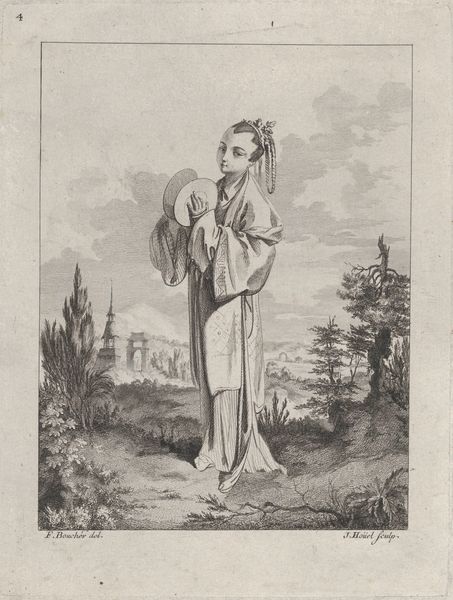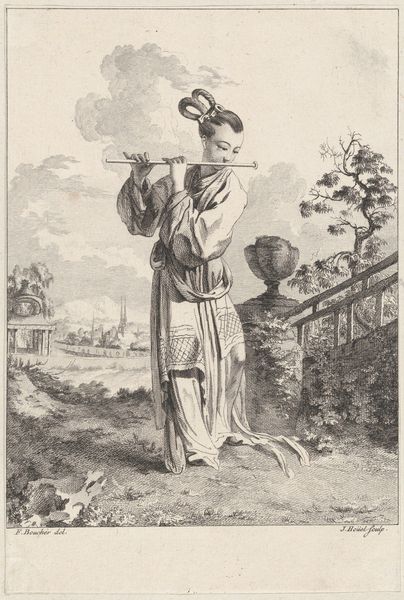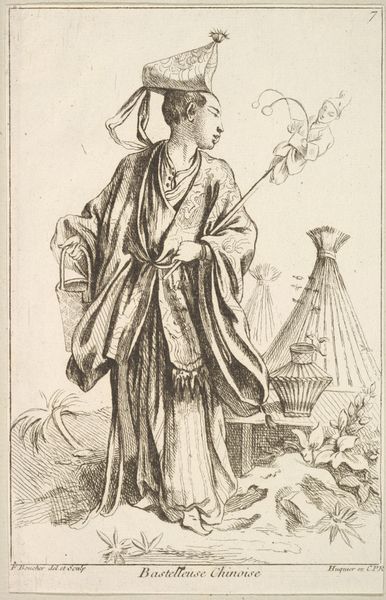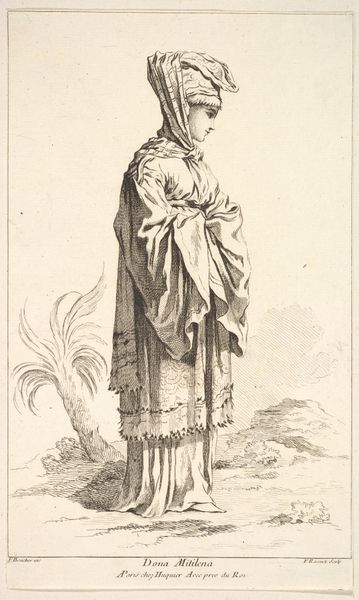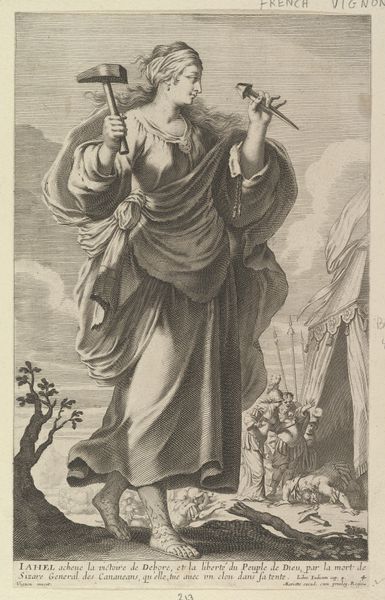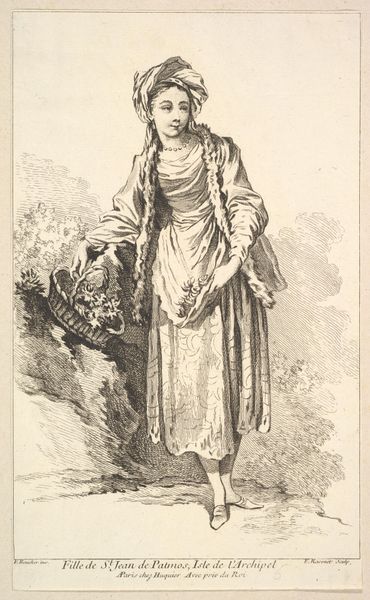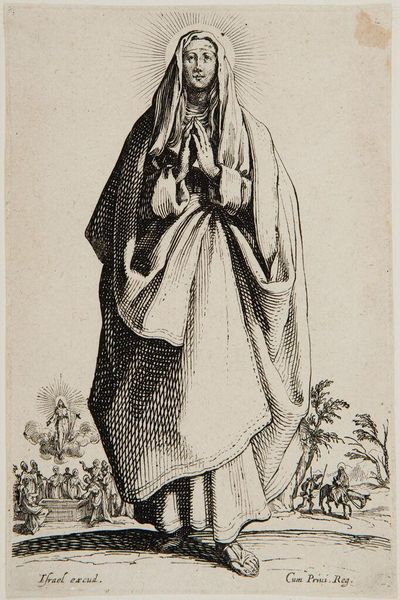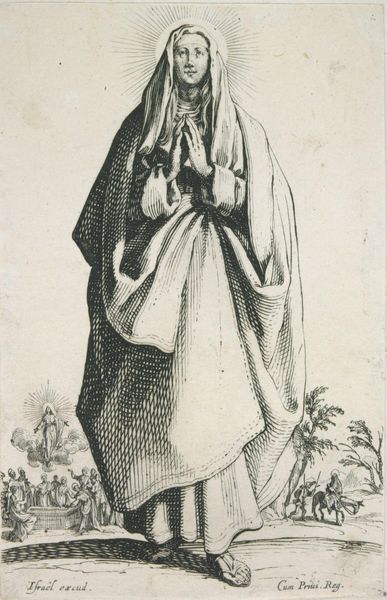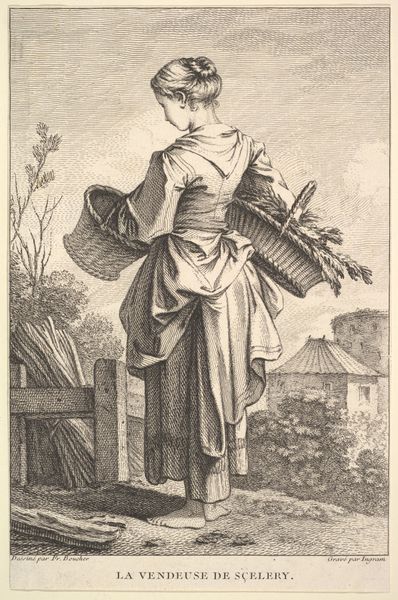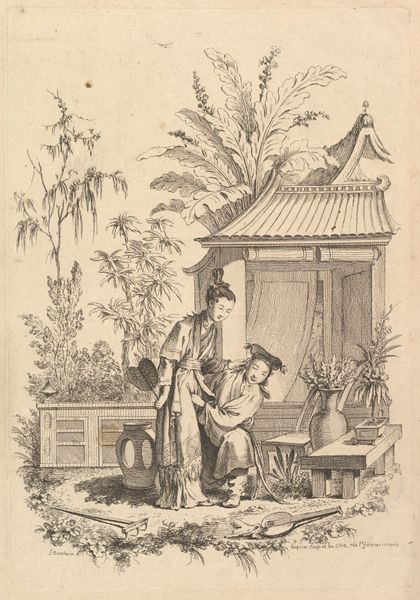
Chinoiserie with a woman playing a gong, from Suite de Figures Chinoises. . .Tiré du Cabinet de Mr. d'Azaincourt (Series of Chinoiserie Figures. . .From the Chambers of Mr. d'Azaincourt) 1755 - 1776
0:00
0:00
Dimensions: Sheet: 8 3/8 × 5 9/16 in. (21.2 × 14.2 cm)
Copyright: Public Domain
This print, now in the Met, was made by Jean Pierre Louis Laurent Hoüel, sometime in the 18th century. It’s an etching on laid paper, meaning that it was made by covering a copper plate with wax, incising lines into the wax, and then submerging the plate in acid. The acid bites into the exposed metal, leaving behind fine grooves. These are then filled with ink, which transfers to the paper when printed. This was a highly skilled technique that allowed for the relatively easy reproduction of images at the time. As you can see in this image, the matrix of fine lines creates tone and texture and the scene is an imaginary landscape that shows a woman in Chinese dress playing a gong. Such images were very fashionable in Europe at the time. It is, in essence, a luxury product made for a consuming public hungry for representations of exotic locales, and made possible by division of labor. From mining the copper, to preparing the paper, to the skilled labor of the etcher, the print embodies the globalizing economy of the 1700s.
Comments
No comments
Be the first to comment and join the conversation on the ultimate creative platform.
